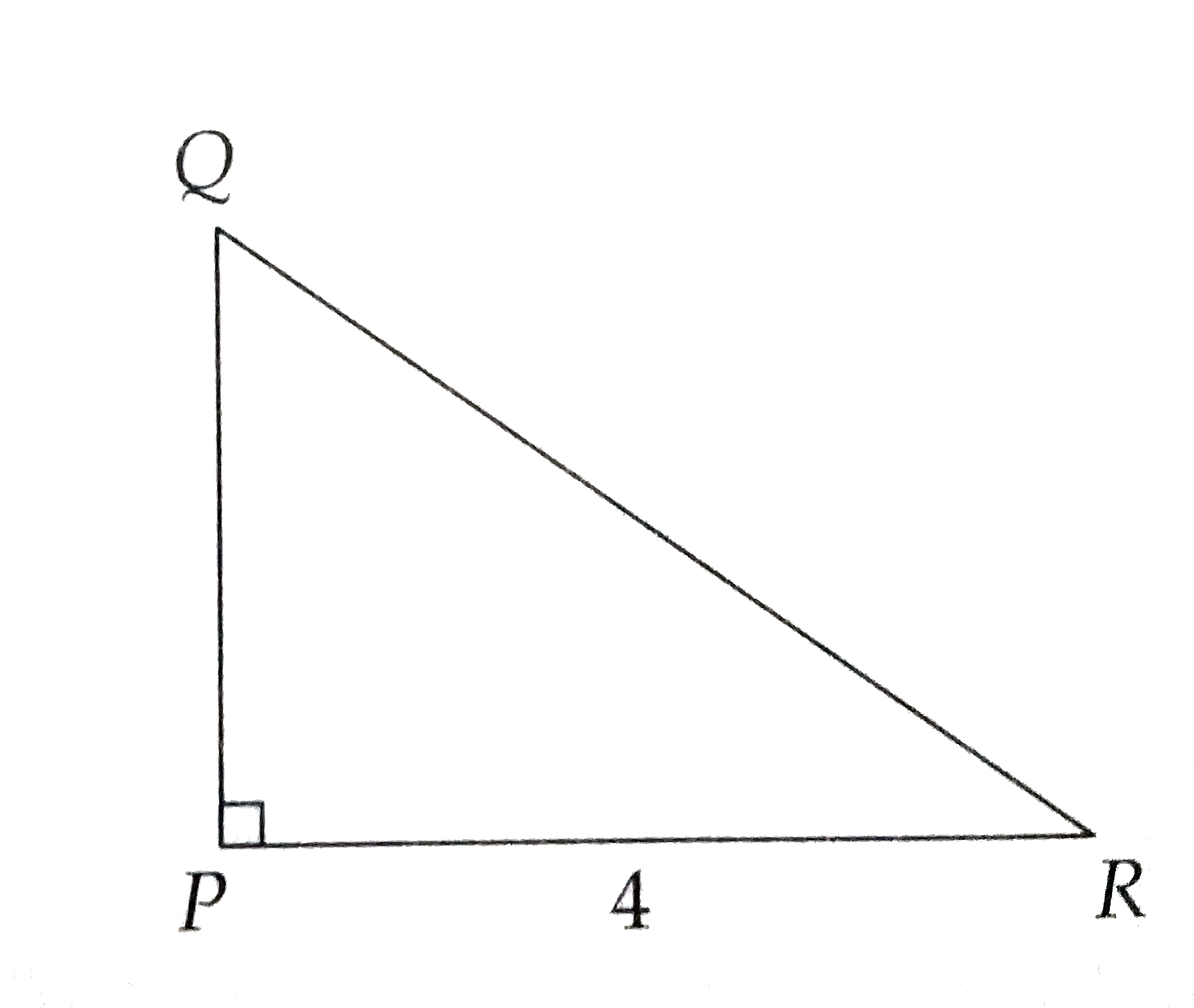Tangent at P to the circumcircle of triangle PQR is drawn. If this tangent is parallel to side QR show that ΔPQR is isosceles.
To prove that triangle PQR is isosceles given that the tangent at point P to the circumcircle of triangle PQR is parallel to side QR, we can follow these steps:
Step 1: Identify the Tangent and Parallel Lines
Let DE be the tangent to the circumcircle of triangle PQR at point P. According to the problem, it is given that DE is parallel to side QR.
Hint: Remember that when two lines are parallel, certain angles formed with a transversal will be equal.
Step 2: Use Alternate Angles
Since DE is parallel to QR, the angles formed by the transversal PR will be equal. Therefore, we can say:
∠EPR=∠PQR
These angles are alternate interior angles.
Hint: Look for the transversal line that intersects the parallel lines to identify equal angles.
Step 3: Apply the Tangent-Chord Theorem
According to the tangent-chord theorem, the angle between a tangent and a chord through the point of contact is equal to the angle in the alternate segment. Thus, we have:
∠DPQ=∠PQR
where DPQ is the angle formed between the tangent DE and chord PQ.
Hint: Recall that the tangent-chord theorem states that the angle between a tangent and a chord is equal to the angle in the alternate segment.
Step 4: Establish Equal Angles
From the previous steps, we have established two pairs of equal angles:
1. ∠EPR=∠PQR
2. ∠DPQ=∠PQR
Thus, we can conclude:
∠DPQ=∠EPR
Hint: Use the properties of angles to show that if two angles are equal to the same angle, they are equal to each other.
Step 5: Conclude that Triangle is Isosceles
Since we have:
∠DPQ=∠PQR
This implies that sides opposite to these angles are equal:
PQ=PR
Therefore, triangle PQR is isosceles with PQ=PR.
Hint: Remember that in an isosceles triangle, the angles opposite the equal sides are equal.
Final Conclusion
Thus, we have shown that triangle PQR is isosceles as required.
Let DE be the tangent to the circumcircle of triangle PQR at point P. According to the problem, it is given that DE is parallel to side QR.
Since DE is parallel to QR, the angles formed by the transversal PR will be equal. Therefore, we can say:
∠EPR=∠PQR
These angles are alternate interior angles.
According to the tangent-chord theorem, the angle between a tangent and a chord through the point of contact is equal to the angle in the alternate segment. Thus, we have:
∠DPQ=∠PQR
where DPQ is the angle formed between the tangent DE and chord PQ.
From the previous steps, we have established two pairs of equal angles:
1. ∠EPR=∠PQR
2. ∠DPQ=∠PQR
∠DPQ=∠EPR
Since we have:
∠DPQ=∠PQR
This implies that sides opposite to these angles are equal:
PQ=PR
Therefore, triangle PQR is isosceles with PQ=PR.
Thus, we have shown that triangle PQR is isosceles as required.
Topper's Solved these Questions
- TANGENTS AND INTERSECTING CHORDSBOOK - ICSECHAPTER - TANGENTS AND INTERSECTING CHORDSEXERCISE - EXERCISE 18 (C)
42 Videos
- TANGENTS AND INTERSECTING CHORDSBOOK - ICSECHAPTER - TANGENTS AND INTERSECTING CHORDSEXERCISE - EXERCISE 18(A)
24 Videos
- SPECIMEN QUESTION PAPER (MATHEMATICS)BOOK - ICSECHAPTER - SPECIMEN QUESTION PAPER (MATHEMATICS)EXERCISE - Section C
12 Videos
- TRIGONOMETRICAL IDENTITIESBOOK - ICSECHAPTER - TRIGONOMETRICAL IDENTITIESEXERCISE - QUESTIONS
22 Videos
Similar Questions
The Circumcircle of the triangle formed by any three tangents to a parabola passes through
View SolutionIf the bisector of the exterior vertical angle of a triangle be parallel to the base. Show that the triangle is isosceles.
View SolutionIf the bisector of the exterior vertical angle of a triangle be parallel to the base. Show that the triangle is isosceles.
View SolutionThe tangent at any point P onthe parabola y2=4ax intersects the y-axis at Q. Then tangent to the circumcircle of triangle PQS(S is the focus) at Q is a line parallel to x-axis y-axis a line parallel to y-axis (d) none of these
View SolutionThe tangent to the circumcircle of an isosceles ΔABC at A, in which AB= AC, is parallel to BC.
View SolutionTangents are drawn to the In -circle of triangle ABC which are prallel to its sides. If x,y,z be the lengths of the tangents and a,b,c be the sides of triangle, then prove that xa+yb+zc=1
View SolutionThe measure of angle angle QPR is 90 degrees, and the area of triangle PQR is 6. If triangle PQR is rotated 360∘ about side PR, what is the total surface area of the resulting solid ?

View SolutionA point P is given on the circumference of a circle of radius r. Chord QR is parallel to the tangent at P. Determine the maximum possible area of the triangle PQR.
View SolutionIf the radius of the circumcircle of the isosceles triangle ABC is equal to AB(=AC), then the angle A is equal to-
View SolutionIn a triangle PQR, QR = PR and ∠P=36∘. Which is the largest side of the triangle ?
View Solution
